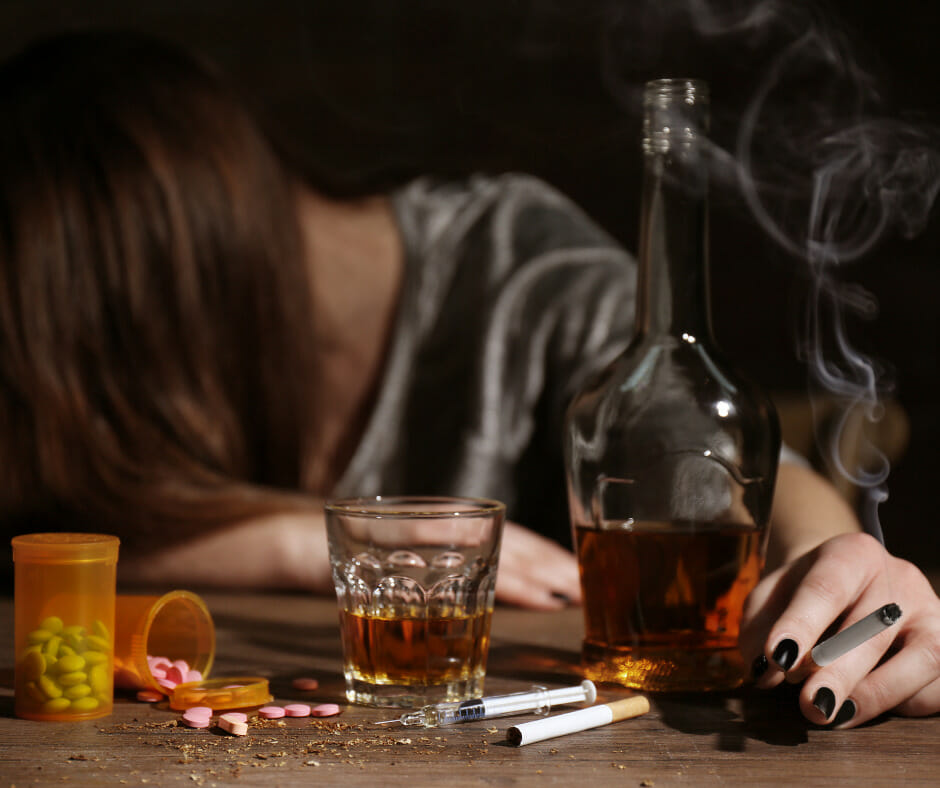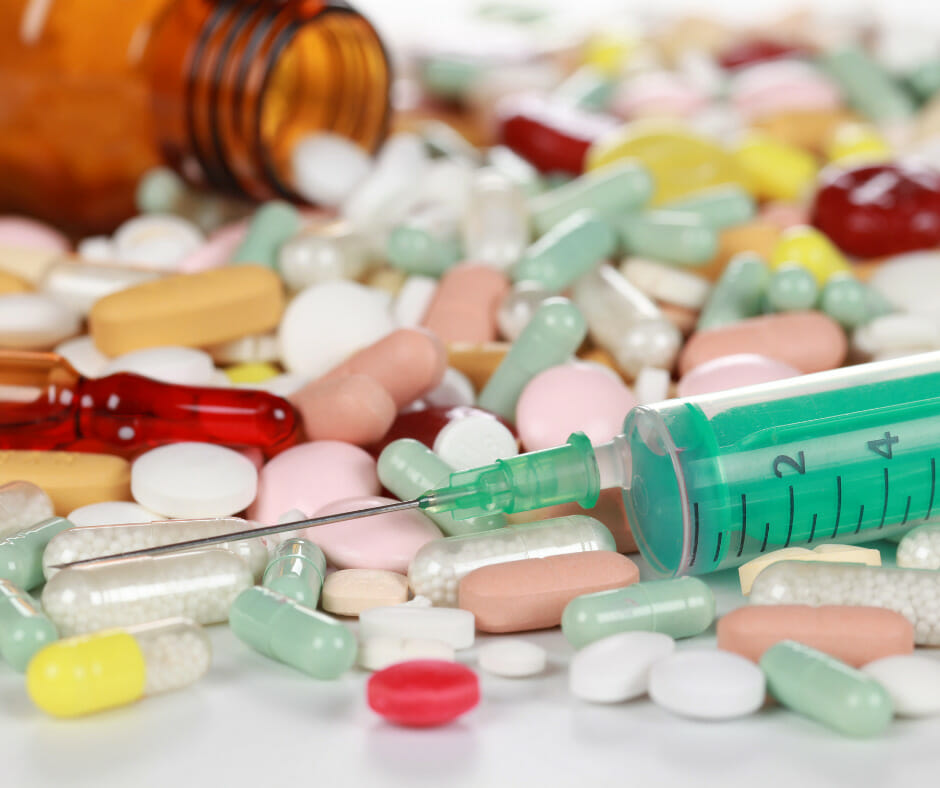Being able to recognize the signs of drug use is paramount in helping individuals struggling with substance abuse. Substance use refers to the consumption, misuse, or addiction to substances such as drugs or alcohol. By being aware of the physical, behavioral, and psychological signs associated with drug use, you can identify the presence of substance abuse in someone’s life and provide the necessary support and intervention. Recognizing these signs can help prevent further addiction and promote recovery.
Different categories of drugs can lead to various physical signs and symptoms. Stimulants, such as cocaine or amphetamines, can cause increased energy, dilated pupils, and heightened alertness. Depressants, like opioids or benzodiazepines, may result in drowsiness, slowed breathing, and impaired coordination. Hallucinogens, such as LSD or mushrooms, can cause hallucinations, altered perception, and increased heart rate. Opioids, including heroin or prescription painkillers, can lead to pinpoint pupils, drowsiness, and slowed breathing. Recognizing these physical signs can provide clues to the specific drug being used and aid in determining the appropriate course of action.
Drug use can also manifest through changes in behavior and emotions. Sudden mood swings, ranging from high energy to extreme agitation or irritability, may be indicative of substance use. Alterations in sleep patterns, such as insomnia or excessive sleepiness, can also be signs of drug abuse. A decline in interest or participation in previously enjoyed activities, along with isolating from friends and family, can suggest substance abuse. A noticeable decline in work or school performance may indicate the presence of drug use. Being alert to these behavioral and psychological signs can allow for early intervention and support.
Different situations may present unique signs of substance use. Adolescents experimenting with drugs may exhibit changes in behavior, decreased academic performance, and withdrawal from family or peers. In the workplace, signs can include erratic behavior, frequent absences, or a decline in work quality. Watching for these signs in loved ones, such as changes in appearance, secretiveness, or financial troubles, can help identify substance abuse problems. Understanding the context and specific signs in these situations enables targeted interventions and assistance.
Dealing with substance abuse requires a comprehensive approach. Seeking professional help is vital for individuals struggling with addiction. Support groups and counseling provide a valuable support network and guidance throughout the recovery process. Education and prevention programs also play a crucial role in raising awareness about substance abuse and assisting individuals in making healthy choices. By accessing these support systems, individuals can find the help they need to overcome drug addiction and find techniques for successful recovery.

Physical Signs of Drug Use
Discover the telltale physical signs of drug use and learn to recognize the subtle indicators that can reveal someone’s substance use. From the signs of stimulant and depressant use to the manifestations of hallucinogen and opioid consumption, we’ll uncover the physical cues that can speak volumes about an individual’s drug habits. Prepare to gain insights into identifying these signs, backed by relevant facts and figures from reliable sources. Get ready to uncover the hidden truths behind substance use.
Signs of Stimulant Use
The signs of stimulant use can identify if someone is using this drug. These signs of stimulant use include increased energy, enlarged pupils, and loss of inhibitions. Recognizing these signs is crucial in identifying stimulant drug use. Approach the situation with empathy and encourage the person to seek professional help if necessary.
Signs of Depressant Use
When seeking out signs of depressant use, it’s important to be aware of certain indicators. Keep an eye out for the following signs:
- Glassy eyes: If someone is using depressants, they may have glassy or bloodshot eyes.
- Loss of coordination: Depressant use can cause a decline in motor skills and coordination.
- Under the influence: Individuals who are using depressants may display behaviors commonly associated with being under the influence, such as slurred speech or slowed reactions.
It’s crucial to note that these signs don’t definitively prove depressant use. However, they may serve as indications that someone is using depressant substances. If you suspect that someone is using depressants, it’s essential to approach the situation with empathy. Seek professional help if necessary.
Signs of Hallucinogen Use
One common physical sign of hallucinogen use is bloodshot eyes. The blood vessels in the eyes become dilated, leading to redness. Hallucinogen use often results in changes in social relationships, and users may associate with a different group of people who also use hallucinogens.
The key indicator of hallucinogen use is experiencing hallucinogenic effects, such as visual distortions, seeing things that aren’t there, or perceiving objects or sounds differently. It’s important to note that the signs of hallucinogen use may vary depending on the specific substance used and the individual.
These signs can help identify potential hallucinogen use, but a professional evaluation is necessary for a definitive diagnosis.
Signs of Opioid Use
Opioid use can result in signs of respiratory depression, which may lead to frequent stomach cramps and potentially fatal overdose-related deaths. Borrowing money might be indicative of individuals trying to obtain opioids to address the pain caused by these frequent stomach cramps. Moreover, missing prescription drugs could be a red flag for potential opioid misuse.
“Prescription painkiller abuse is the fastest growing drug problem in the United States. In the past year, approximately one out of twenty Americans reported misuse or abuse of prescription painkillers,” reports a study published in American Journal of Law & Medicine. (Combating the Prescription Painkiller Epidemic: A National Prescription Drug Reporting Program, Shepherd, 2021)

Behavioral and Psychological Signs of Drug Use
Ever wondered how to spot signs of substance use in someone? In this section, we will delve into the behavioral and psychological indicators that may signal drug use. From sudden mood swings to changes in sleep patterns, loss of interest in once enjoyed activities to isolation and changes in social circles, and even a decline in performance at work or school – we’ll explore these telltale signs that could indicate someone is on drugs. Don’t miss this important insight into recognizing substance use.
Sudden Mood Swings
Sudden mood swings may indicate substance use. Recognize signs of sudden mood swings to address underlying issues. Here are some key points to consider:
- Aggressive behavior: Experiencing sudden mood swings may manifest as increased aggression or irritability. This can include feelings of anger, hostility, or even violence.
- Feeling helpless: Individuals who go through sudden mood swings may feel overwhelmed and helpless in managing their emotions or situations.
- Risk-taking: Another sign of sudden mood swings is engaging in risky behaviors without considering the consequences. This may involve participating in dangerous activities, reckless driving, or engaging in illegal or harmful behaviors.
Pro-tip: When you notice someone experiencing sudden mood swings, approach them with empathy and understanding. Encourage open communication and offer support without judgment. Seeking professional help or guidance from a healthcare professional or counselor familiar with substance use disorders can be beneficial.
Changes in Sleep Patterns
Changes in sleep patterns can indicate substance use. Being aware of these changes is essential to identify potential struggles with substance abuse.
Common changes in sleep patterns include difficulty falling asleep, staying asleep, or disrupted sleep. Individuals may also experience either excessive sleep or insufficient sleep, leading to fatigue or grogginess during the day. Neglecting responsibilities, such as work or school, due to disrupted sleep patterns is another sign.
It is important to note that changes in sleep patterns alone do not definitively indicate substance use, but they can be a red flag. If you notice these changes in someone you know, it may be worth having a conversation to express your concerns and offer support.
If you suspect substance use, encourage the individual to seek professional help. Resources such as SAMHSA’s national helpline, treatment referral routing service, and online treatment locator are available. Support groups and counseling can also be beneficial. Community-based organizations often offer support groups and services on a sliding fee scale.
Educational and prevention programs are crucial in addressing substance use. They provide information and frequently asked questions to help individuals understand the risks and available treatment resources.
Loss of Interest in Previously Enjoyed Activities
According to a research by the journal Drug and alcohol Dependence, studying the symptom networks in patients of substance abuse, loss of interest in previously enjoyed activities, such as hobbies, sports, or other recreational activities, is a common sign of drug use. This manifestation can be observed in several ways, making it an important indicator to watch for. Individuals using drugs may feel isolated and withdraw from social interactions, preferring to be alone. They may start avoiding activities they used to enjoy with friends and family, leading to a sense of loneliness and detachment.
Moreover, people under the influence of drugs may experience a decreased participation in activities they once found pleasurable. They may show a lack of interest, motivation, and enthusiasm for these activities that used to bring them joy. In addition, substance use can strain relationships with family, friends, and romantic partners. Those using drugs may become unreliable, frequently cancel plans or show up late. They may also exhibit unpredictable behavior or become distant, causing conflicts and challenges within their relationships.
It is important to note that a loss of interest in previously enjoyed activities can be caused by various factors, not just drug use. However, if this sign is accompanied by other behavioral or physical signs mentioned in the article, it may be necessary to seek further assistance or professional help.
Isolation and Change in Social Circle
Isolation and change in the social circle are common indicators of substance use. When individuals struggle with substance abuse, they may naturally distance themselves from loved ones, encounter problems with friends, and experience feelings of shame. These shifts in social interactions clearly signal a problem.
It’s important to note that substance abuse often leads to isolation. People tend to separate themselves from their usual social circles and activities, opting to spend more time alone or with a new group involved in substance use. This sense of isolation only exacerbates feelings of loneliness and further impacts well-being negatively.
Additionally, a significant aspect of substance abuse is the change in the social circle. Individuals engaged in substance use tend to associate with others who share similar habits and behaviors. As a result, this change alters their interests, priorities, and values. They naturally distance themselves from old friends while developing new relationships centered around drug use.
Recognizing these signs of isolation and change in the social circle is crucial for early intervention and support. If you notice these indicators in someone you know, it is essential to offer understanding, empathy, and help. Encourage them to seek professional assistance, such as contacting SAMHSA’s national helpline or utilizing treatment referral services. These resources provide much-needed support to address substance use and facilitate reintegration into healthier social circles.
Always remember that support and understanding play a pivotal role in helping individuals navigate through this challenging time.
Decline in Performance at Work or School
A decline in work or school performance can indicate substance use. Recognize and address the issue promptly to prevent further negative consequences.
Signs of decline include lower grades or work quality, frequent problems, and attendance issues. These signs suggest drug or alcohol influence, impairing cognitive abilities and productivity. According to Herb Weingartner, PhD, of the Division of Neuroscience and Behavioral Research at the National Institute on Drug Abuse (NIDA), excessive drug abuse targets the parts of brains controlling cognitive abilities.
Approach the situation with empathy and concern if you notice a decline. Encourage open communication and offer support. Involving professionals like counselors or addiction specialists may be necessary for guidance and intervention strategies.
Avoid making assumptions about the decline’s reasons; substance use is one possibility among others. By understanding the situation and seeking appropriate help, the person experiencing difficulties can receive support to overcome challenges.

Recognizing Signs of Substance Use in Specific Situations
Recognizing signs of substance use in specific situations is key when it comes to identifying if someone is on drugs. In this section, we’ll dive into different scenarios where we can observe these signs. From spotting signs of drug use in adolescents to identifying them in the workplace and even in our loved ones, we’ll explore the various red flags and behaviors to watch out for. Stay tuned to learn valuable insights that can help you navigate these situations with clarity and understanding.
Signs of Drug Use in Adolescents
When it comes to signs of drug use in adolescents, it is important to pay attention to certain behaviors that may indicate substance abuse. Here are some key signs to look out for:
- Problems at home: Adolescents who use drugs may experience conflicts with their family, exhibit aggressive behavior, or engage in secretive actions.
- Problems at school: Drug use can have a negative impact on academic performance. Watch for declining grades, increased absenteeism or tardiness, and behavioral issues.
- Risk-taking behaviors: Adolescents who are experimenting with drugs may participate in risky activities such as driving under the influence, engaging in promiscuous behavior, or attempting dangerous stunts.
It’s important to remember that these signs can vary among individuals. It’s crucial to consider other factors and gather enough evidence before jumping to conclusions about drug use. If you suspect drug use in an adolescent, approach the situation with care and seek professional help.
Signs of Drug Use in the Workplace
When it comes to identifying signs of drug use in the workplace, it is crucial to be observant and proactive. Here are some key indicators to look out for:
- Problems with coworkers: Frequent conflicts or disagreements with colleagues could signal drug use.
- Legal trouble: A sudden increase in arrests or fines could indicate drug use.
- Complaints of stomach cramps: Frequent complaints without any known medical condition may be a sign of drug abuse.
Recognizing signs of drug use is pivotal for maintaining a productive and safe work environment. Approach these situations with empathy, understanding, and appropriate action. If you notice any of these signs, reach out to HR or management to address the issue and provide support.
Pro-tip: Creating a supportive and non-judgmental environment is crucial when addressing a decline in work or school performance. Encourage open dialogue and connect individuals in your company with appropriate resources for support and treatment. Remember, intervention and support are critical in helping someone overcome substance use and regain productivity and well-being.
Signs of Drug Use in a Loved One
When it comes to recognizing signs of drug use in a loved one, be observant and aware of any changes in their behavior or appearance. Here are some signs to look out for:
- Unexplained changes in behavior: If your loved one behaves differently, such as becoming more secretive, irritable, or withdrawn, it could be a sign of drug use.
- Physical appearance changes: Look for sudden changes in their appearance, such as bloodshot eyes, weight loss or gain, and poor hygiene.
- Financial issues: If your loved one frequently asks to borrow money or has financial difficulties, it could be a red flag of drug use.
- Missing personal items: Keep an eye out for missing prescription drugs or personal belongings that may have been sold or pawned to support a drug habit.
- Sudden mood swings: Look for extreme shifts in their mood, from euphoria to irritability or depression.
Approach your loved one with care and concern if you suspect drug use. Open communication and support can be key in helping them seek treatment and overcome their addiction.
If you find any illicit drugs lying around your house, here is our complete guide on how to handle the situation safely when you find drugs in your home.

Support and Resources for Addressing Substance Use
Looking for help and resources to address substance use? You’ve come to the right place. In this section, we’ll uncover various avenues of support that can make a difference. From seeking professional help to joining support groups and counseling, as well as engaging in education and prevention programs, we’ll explore the wide range of options available. Whether you’re seeking guidance for yourself or a loved one, these resources can empower you on the journey towards recovery.
Seeking Professional Help
Seeking professional help is vital when dealing with substance use. SAMHSA’s national helpline is a dependable resource that provides valuable information and connects individuals with treatment referral services. By utilizing this service, individuals can find appropriate treatment options that meet their needs.
Another valuable platform for seeking professional help is the outpatient treatment programs. These programs offer flexibility and support for individuals seeking addiction recovery, allowing them to receive therapy and counseling while maintaining their daily routines and responsibilities. Many rehabs like Lantana Recovery, outpatient rehab in Greenville, South Carolina can be a valuable step towards achieving long-term sobriety and improved well-being.
In addition to professional help, support groups and counseling provided by community-based organizations play a significant role in the recovery process. These support groups offer a safe space for individuals to connect with others facing similar challenges, providing emotional support, guidance, and a sense of belonging.
Seeking professional help is not a sign of weakness but rather a courageous step towards a healthier and happier life. If you or someone you know is struggling with substance use, do not hesitate to reach out to available resources and seek the assistance needed. Remember, help is available, and recovery is possible.
Pro-tip: Gathering information about different treatment options, speaking with multiple professionals, and openly communicating concerns and expectations can help individuals choose the most effective support and treatment.
Support Groups and Counseling
When it comes to addressing substance use, support groups and counseling are crucial for recovery.
- Support groups: These groups offer a sense of community and understanding. They involve individuals facing similar challenges who provide empathy, advice, and encouragement. Support groups create a safe space for sharing experiences, struggles, and triumphs, providing emotional support and fostering a sense of belonging. It’s important to find a group that aligns with specific needs and preferences.
- Counseling: Professional counseling benefits individuals dealing with substance use disorders. Counselors provide a nonjudgmental environment to explore thoughts and emotions related to substance use. They help identify underlying issues or triggers and develop coping mechanisms for managing cravings and stress. Counseling may also involve setting goals, creating personalized treatment plans, and addressing mental health conditions.
- Community-based organizations: These organizations often offer support groups and counseling services specific to populations such as youth, families, or individuals in recovery. They connect individuals with additional resources and services, like treatment facilities, medical professionals, and vocational training programs.
- Sliding fee scale: To accommodate financial constraints, many support groups and counseling services offer a sliding fee scale. This adjusts the cost based on income or ability to pay, ensuring accessibility for those in need, regardless of financial situation.
Support groups and counseling are vital resources for individuals working towards recovery from substance use. They provide understanding, professional guidance, and community-based support along the journey.
Education and Prevention Programs
Education and prevention programs are essential in addressing substance use. They raise awareness and provide individuals with the knowledge and skills needed to make informed decisions. Here are key elements of these programs:
1. Prevention Programs: These programs focus on providing information and resources to prevent substance use. They educate individuals about risks and consequences and promote healthy alternatives. Hence addressing the drug abuse epidemic and cut down healthcare costs associated with SUD, suggests Colizzi, Lasalvia, and Ruggeri in International Journal of Mental Health Systems. Prevention programs include school-based programs, community campaigns, and targeted interventions.
2. Information Services: These programs provide valuable resources and materials to individuals seeking information about substance use. Services may include websites, helplines, and online platforms with accurate and up-to-date information on various substances and their effects.
3. Frequently Asked Questions: Education and prevention programs address common questions and concerns through FAQs. These resources help individuals understand facts about substance use, its impact on physical and mental health, and how to seek help.
4. State-Funded Treatment Programs: Some programs offer state-funded treatment programs to individuals struggling with substance use. These programs provide access to affordable or free treatment options, counseling services, and support groups to facilitate recovery.
Education and prevention programs contribute to creating healthier and safer communities by providing accurate information, promoting prevention strategies, and offering support.

Frequently Asked Questions
How can I tell if someone is on drugs?
Signs of drug use may include:
- Withdrawal from friends and family
- Changes in friendships
- Drop in grades or attendance at school
- Signs of sadness or depression
- Increase in borrowing money
- Evidence of drug paraphernalia or missing prescription drugs
What are the physical warning signs of drug abuse?
Physical warning signs of drug abuse may include:
- Bloodshot eyes
- Changes in appetite and sleep patterns
- Unusual smells or impaired coordination
- Enlarged pupils
- Complaints of stomach cramps
- Blurred vision, headaches, or dizziness
What are the behavioral signs of drug abuse?
Behavioral signs of drug abuse may include:
- Drop in attendance and performance at work or school
- Secretive or suspicious behaviors
- Sudden changes in friends and hobbies
- Aggressive behavior
- Irritability and moodiness
- Changes in eating patterns
How do drugs affect different people?
Drugs can affect different people in different ways. The type of drug taken, such as alcohol or methamphetamine, will determine the specific effects experienced.
How can I seek help for someone with substance use issues?
You can seek help for someone with substance use issues by contacting SAMHSA’s National Helpline at 1-800-662-HELP (4357) or TTY: 1-800-487-4889. This confidential and free treatment referral and information service is available 24/7 and can provide referrals to local treatment facilities, support groups, and community-based organizations.
Does the SAMHSA helpline provide counseling?
No, the SAMHSA helpline does not provide counseling. However, it has trained information specialists who can transfer callers to state services or appropriate intake centers to connect them with local assistance and support.









